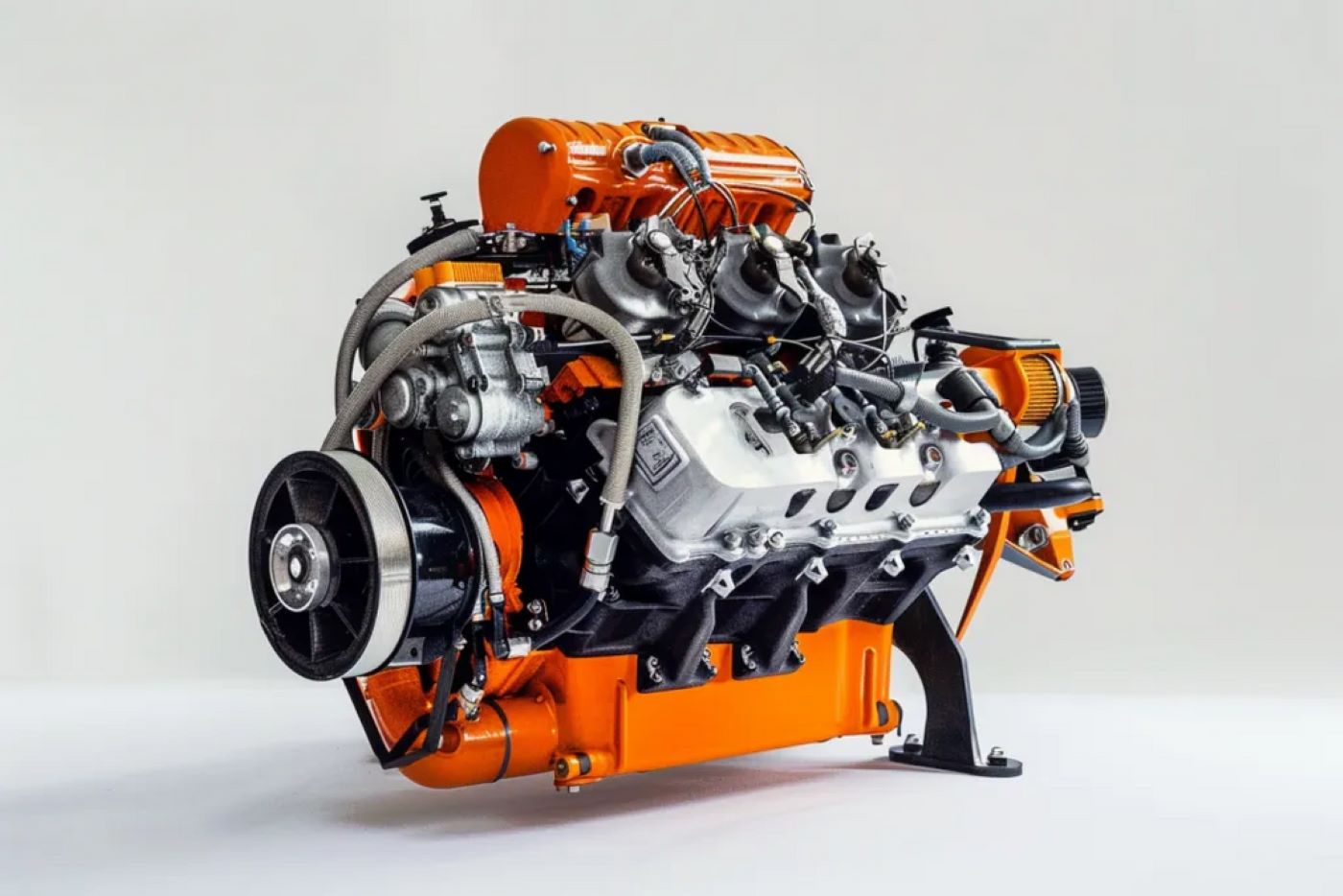The world of super Chevys wouldn’t be nearly as fascinating without the legendary engines that bring them to life.
Prior to 1955, Chevy engines weren’t given much attention in the hot-rod scene. Their Stovebolt Six motors were dependable but lacked the excitement that performance enthusiasts craved.
Everything changed in the autumn of 1954 with the introduction of Ed Cole’s innovative, lightweight V-8. This revolutionary engine debuted in a stunning 1955 model that was redesigned from the ground up. Before long, more potent variations were introduced.
Once thrill-seeking gearheads experienced the power and compact design of this new engine, it quickly surpassed the flathead Ford as the new favorite in the performance community.
By 1957, Chevy unveiled a larger engine, the 348, which eventually led to the development of the legendary 409.
Immortalized in song, the 409 was succeeded in 1965 by the 396. This evolution continued with the debut of the 427 and then the 454. In the 1990s, the LS engine family emerged, beginning a fresh era in Chevy’s performance legacy.
Presented here in chronological order, Super Chevy Platinum lists its selections for the Top 15 Chevy engines of all time.
Also Read: 10 Vehicles With Engines That Can Handle Towing Abuse
1) 265 V-8 (3.750 x 3.00)
Introduced for the 1955 model year, this engine powered more than half of all Chevrolets sold that year—and again in 1956.
Its production run concluded by mid-1957, when it was no longer available. Early versions with two-barrel carbs and manual transmissions saw use.
Certain trucks and select car models featured iron blocks with thicker cylinder walls, which allowed for a 0.125-inch (1/8-inch) overbore, increasing displacement to 283 cubic inches.
Remarkably, the iconic 1955 small-block V-8 launched a legacy that would span more than 50 years.
The first 265 engine built at Flint Engine Plant on July 9, 1954, was preserved for permanent display in a sealed enclosure. Overall, more than 1.5 million Chevrolets with the 265 engine were sold.
2) 283 V-8 (3.875 x 3.00)
Offered as a passenger car option from the 1957 through 1967 model years, this engine was versatile and capable—achieving the remarkable feat of producing one horsepower per cubic inch in 1957, aided by a “Duntov” camshaft and Rochester fuel injection.
Hot-rodders commonly bored the cylinder walls 0.060 inch for 292 cid, or 0.125 inch for 301 cid, then added 1.94-intake valve heads (starting in 1960) or 2.02-intake valve heads (from 1964 onward).
Performance upgrades also included a ’57–’61 245 or 270hp dual WCFB carb setup, or a post-’62 aluminum high-rise four-barrel intake paired with a 500–600 cfm Carter AFB or Holley carburetor after 1965.
These versions—283s, 292s, and 301s—dominated the streets of American towns everywhere, particularly when matched with a Borg-Warner T-10 four-speed transmission and high numerical rear-end gears.
The 283 engine also powered countless American work trucks. In total, millions were sold.
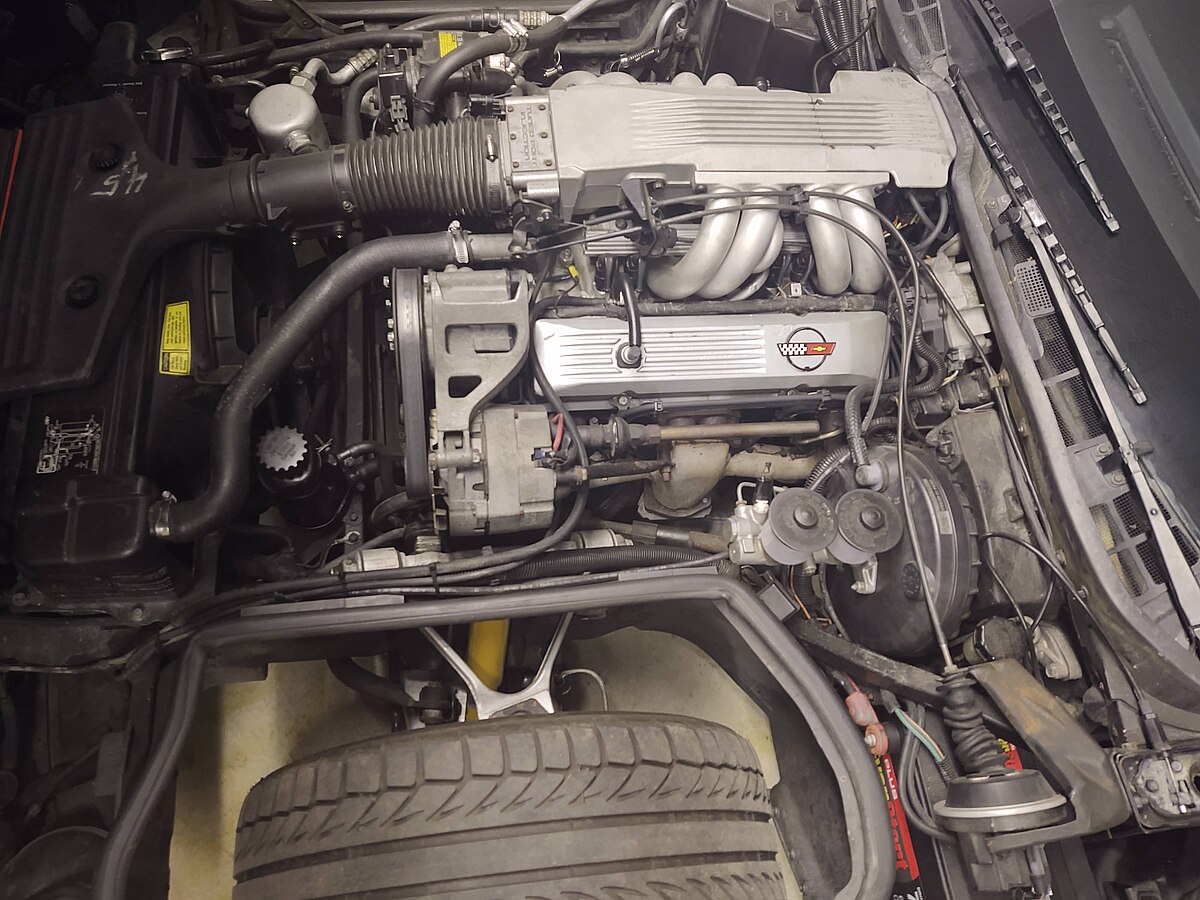
3) L65 327/365HP V-8 (4.00 x 3.25)
Between 1958 and 1964, Chevrolet vehicles became larger and heavier, prompting factory engineers to increase the 283’s displacement to 327 cubic inches by boring and stroking it.
The highest horsepower rating ever offered for a 327 from the factory was 375, available in the 1964–’65 Corvette equipped with Rochester fuel injection.
However, the best value came from the 365hp version, which featured a 600-cfm Holley carb mounted on an aluminum high-rise intake manifold.
Both the 375 and 365hp versions shared identical internals: 11.0:1 compression ratio, large ports, 2.02-inch intake valve heads, and the aggressive “30-30” solid lifter camshaft.
These engines delivered peak power across a 2,700 to 7,200 rpm range and responded instantly. Many enthusiasts purchased these engines directly from GM parts departments as over-the-counter components.
Some were later fitted with the potent 750-cfm, dual-inlet Holley 3310 carburetor for even more performance.
Thousands of Chevy IIs and Malibus originally powered by 301 engines were transformed into ultimate performance machines for both street and strip with the addition of the factory 365hp 327.
4) 348 & 409 “W” Motors (4.125 x 3.25 & 4.3125 x 3.50)
The 348 was first engineered as a heavy-duty truck engine, intended to tow significant loads. But when placed into a 1958 Impala with a two-speed Powerglide automatic, it lacked excitement.
With increased compression, a high-lift camshaft, tri-power induction, manual transmission, and proper gearing, however, it became a true high-performance torque powerhouse, capable of producing more than 300 horsepower at around 5,500 rpm—while still using stock factory exhaust.
In 1960–’61, 348s rated at 315, 320, 335, and 350 horsepower consistently brought Chevrolets to victory lanes across the country.
The high-performance 409, available from 1961 to 1965, was essentially a bored and stroked 348 with bigger head ports and valves.
Though it featured heavy pistons due to its cylinder head and combustion chamber design, it remained competitive in most forms of racing—except for NASCAR’s long-distance tracks.
(Just imagine eight two-pound pistons spinning at 6,400 rpm for hours on end.) On short tracks, however, it thrived. In 1962–’63, a majority of top drag racers in the U.S. relied on the 409.
During the mid-’60s, many regional and budget-conscious racers successfully ran B and C/Stock class 409s. Among the standout 409 racers in 1962 were Dyno Don Nicholson, Hayden Proffitt, Dave Strickler/Bill Jenkins, Dick Harrell, Ronnie Sox, and Butch Leal.
Dozens of other national, regional, and local competitors also achieved great success with the engine. And thanks to their popular hit song, “409,” the Beach Boys added even more fame to the engine’s legacy.
5) L78 396/425HP (4.094 x 3.76)
The origin of this engine can be traced back to the “Mystery Motor 427” that debuted at Daytona in 1963.
Developed to give Chevrolets a competitive edge on NASCAR’s high-speed tracks, the engine turned heads with blistering qualifying times. However, during the race, relatively minor issues like water pump failures sidelined every entry.
Still, the performance potential was evident. A year of further engineering refinement led to a slightly larger external dimension—by about an inch—and none of the Mystery Motor’s internals would fit the production version.
In February 1965, two new “big-block” Turbo Jet 396 engines replaced the dual 409s: RPO L35, a 325hp torque-oriented engine with high-velocity oval-port heads and an 800-cfm Rochester Quadrajet carb; and RPO L78, a 425hp high-performance monster featuring rectangle-port heads, 11.0:1 compression, and an aluminum high-rise intake topped with an 800-cfm Holley carburetor.
Either option was available for full-size Chevrolet models. Production totals were: L35—55,454 units; L78—1,838 units. Additionally, 2,157 Corvettes received the L78 engine as a $292.70 upgrade.
At the time, the 425hp 396 stood as the quickest and fastest RPO (Regular Production Option) Chevrolet had ever built—though that title wouldn’t last long.
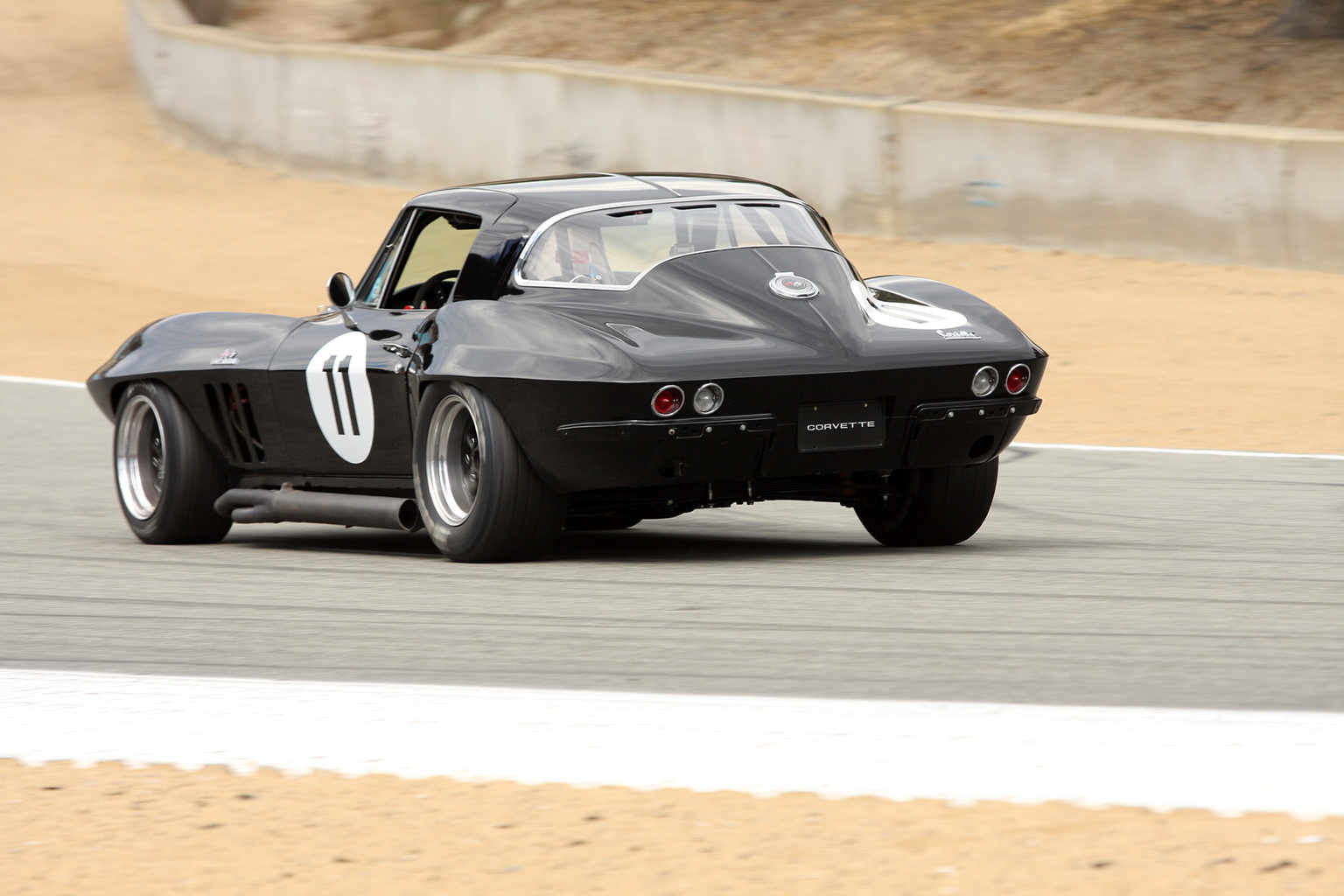
6) L72 427/425HP (4.250 x 3.76)
Known by its RPO code L72, this engine was featured in 1966 Corvettes, as well as full-size passenger Chevrolets in 1966, 1968, and 1969.
Though it was officially rated the same as the ’65 L78 396 at 425 horsepower, it actually delivered 450 horsepower and was initially advertised at that figure during the early part of the 1966 model year.
However, concerns over rising insurance premiums for owners (and a potential impact on sales) led to the rating being quickly revised back to 425.
Since its introduction, this engine has proven successful in every regard and served as the foundation for all solid-lifter big-blocks offered up to 1969. In 1966, there were 1,856 L72-equipped full-size passenger cars sold.
In 1968 and 1969, big-car L72 sales totaled 568 and 546, respectively. Due to their size, these late-’60s full-size Chevrolets were massive, and most performance-minded buyers instead turned to the Chevelle, Nova, and Camaro platforms.
Also Read: 12 Classic Trucks Known for Timeless Reliability & Performance
7) 427/430HP L88 (4.250 x 3.76)
Offered from 1967 to 1969 as RPO L88, this race-bred engine was listed at just 430 horsepower for very deliberate reasons—most notably, the stated rpm at which the figure was measured: a low 5,200 rpm.
Why advertise that your 12.5:1 compression, radical camshaft, rectangle-port 427 engine actually cranks out more than 550 horsepower at 7,400 rpm?
Factory availability was limited to the Corvette and through parts counters. The L88 generated such extreme power and heat that it was notoriously difficult to run on the street.
In fact, Corvettes equipped with the L88 came with a factory-installed center console plate that read, “Not For Street Use.” Built for road racing dominance, the L88 saw limited sales: 20 units in 1967, 80 in 1968, and 116 in 1969.
Its solid-lifter camshaft delivered an unmatched exhaust note—so much so that thousands of Chevelle, Camaro, and Nova owners with solid-lifter 396s installed it to achieve maximum power and a fierce, aggressive idle.
8) 427/430HP ZL1 (4.250 x 3.76)
Originally developed for the 1969 Camaro’s participation in Super Stock drag racing, this engine was available exclusively through “Central Office Production Order 9560.”
The ZL1 Camaro was a legitimate, factory-produced Super Stock/B drag racer.
Powered by an all-aluminum 427 that made more than 550 horsepower, Chevrolet Engineering initially anticipated that racers could acquire it at an affordable cost.
But once corporate accounting got involved, no price breaks were granted. The engine alone cost $4,160—more than the base price of a V-8 Camaro at $2,727. With tax, registration, and delivery, the final price topped $7,000.
Internally, the ZL1 closely resembled the iron-block L88 427, but it featured open-chamber cylinder heads to enhance high-rpm performance, floating wrist pins, and a handful of small upgrades. Camaro production totaled just 69 units.
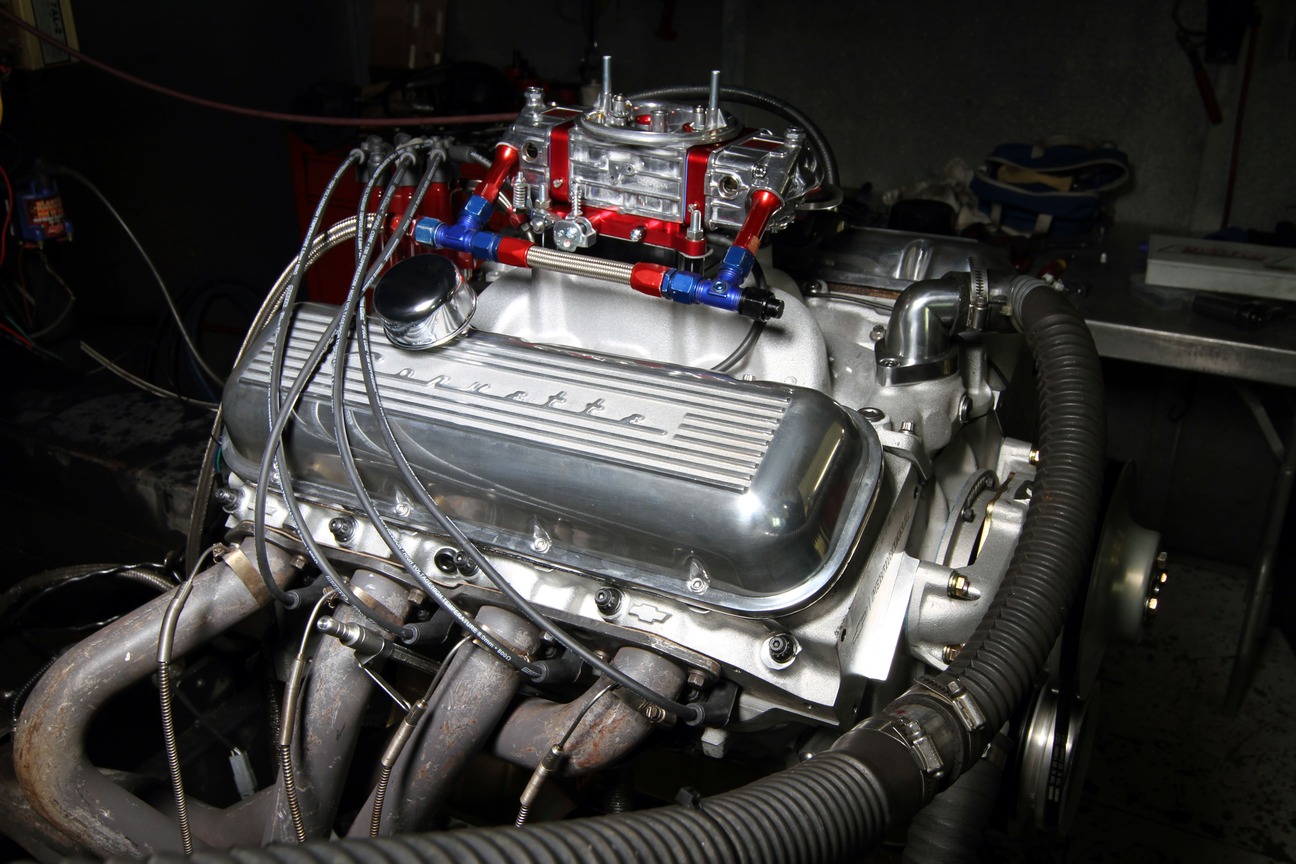
The complete list of ZL1 identification numbers remained unknown until the early 1980s, when all were revealed in Super Chevy by then-editor and co-author Doug Marion, with help from Chevy Product Promotion icon Vince Piggins.
According to varying sources, at least two—and possibly three—ZL1-powered Corvettes were also built and sold to the public.
9) 454/450HP LS6 (4.250 x 4.00)
This powerhouse was a one-year, one-model marvel introduced in the 1970 Chevelle SS, with a production total of 4,475 units. However, for years afterward, thousands more LS6 short- and long-blocks continued to be sold.
It featured four-bolt main bearing caps, a high 11.0:1 compression ratio, a specially designed high-lift camshaft, massive rectangle-port cylinder heads, and an 800-cfm dual-inlet Holley carburetor mounted on a flat, aluminum intake manifold.
Most LS6-powered Chevelles came equipped with the optional cowl-induction hood that channeled cooler air into the engine. Some LS6 cars without the cowl-induction setup instead received a factory or aftermarket aluminum high-rise intake manifold.
Many savvy owners believed the high-rise intake provided more performance than the cowl hood—and they were right.
With the high-rise intake in place, combined with tubular headers and expert tuning, LS6s delivered over 500 horsepower and could run the quarter-mile in the high 11-second range at over 115 mph—provided they had slicks and 4.10 to 4.56:1 rear-end gears. That was an impressive feat for a street-legal car weighing more than 4,000 pounds.
Today, the 1970 450hp LS6 is widely regarded as the ultimate predecessor to GM’s modern big-inch crate engines. In 1970, there wasn’t a single street tire capable of fully managing the LS6’s brute torque and horsepower. As soon as the Holley carb’s secondaries kicked in, the rear tires would lose traction instantly.
10) LT5 350/375–405HP (3.90 x 3.66)
In the late 1980s, the Corvette was already a hot commodity, thanks to its Tuned Port Injected pushrod small-block V-8 delivering 240–250 horsepower.
It could exceed 150 mph and complete the quarter-mile in the 13-second range. But then whispers emerged about a Corvette supercar project—insiders called it the King of the Hill. As it turned out, the rumors were true.
Collaborating with recently acquired Lotus, Chevy unveiled the ZR-1, a 180-mph beast capable of outperforming contemporary Ferraris. At the heart of the ZR-1 was the brand-new, all-aluminum LT5 V-8—a dual-overhead cam, 32-valve, 350-cubic-inch engine delivering 375 horsepower.
The ZR-1 option tacked on a jaw-dropping $27,016 to the base Corvette’s $31,979 sticker price, but in the realm of exotic supercars, it was still considered a bargain. Performance-wise, the LT5 delivered 12.8 to 13.0-second quarter-mile times at 110 mph.
While 375 horsepower might not sound impressive today—especially when modern base Corvettes make around 430 horsepower—it represented a 50-percent power increase over the base Vette in 1990.
The LT5’s ultimate claim to fame came when it set a 24-hour endurance speed record, averaging 175.8 mph even with fuel stops. “King of the Hill,” indeed!
11) LS1 346/345HP (3.898 x 3.62)
When GM rolled out the Gen II small-block LT1 in the 1992 Corvette, it set a new standard—but it was still a surprise when the 1997 Corvette debuted with an entirely new engine. Although the LS1 retained the traditional small-block’s 4.4-inch bore spacing, it had little in common with its predecessors.
This all-aluminum engine featured a deep-skirt block design and incorporated not only four-bolt main bearing caps but also added two cross-bolts per cap for increased strength.
The cylinder heads, also made of aluminum, broke away from the classic design by eliminating the Siamese center intake ports that had been a hallmark of small-block Chevys since 1955.
This new approach resulted in significantly better port geometry and race-inspired cylinder head airflow. LS1 heads deliver 245 cfm straight from the factory. In addition, the camshaft bores were larger and positioned higher in the block.
Altogether, the engine weighed 100 pounds less than the Gen I small-block Chevy. Although it would later be replaced by the improved Gen IV LS2 small-block, the LS1 ignited a performance revolution when it launched in 1997—one that was still going strong well into 2011.
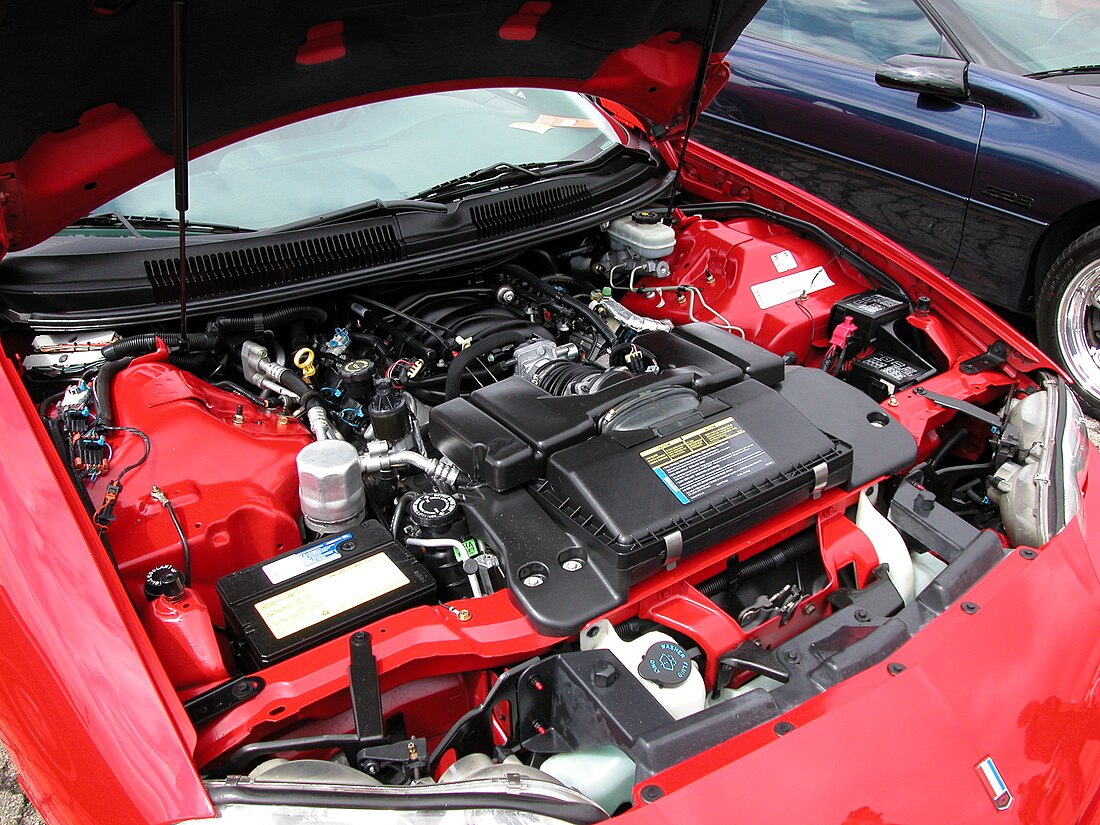
12) LS6 346/385–405HP (3.898 x 3.62)
Despite sharing the LS1’s bore and stroke, the LS6 was a distinctly different engine from the block upward. Introduced exclusively in the all-new 2002 Corvette ZO6, it filled the performance void left by the retirement of the ZR-1 in 1995—while doing so at a significantly lower price point.
The LS6 featured a redesigned intake manifold, upgraded exhaust manifolds, a more aggressive camshaft, and improved high-flow cylinder heads, which together delivered 385 horsepower.
In the lightweight ZO6 chassis, this setup was capable of factory quarter-mile times in the 11-second range, easily outperforming the ZR-1 in every aspect except top speed (which came in at about 171 mph).
In 2003, the LS6 received several updates, including a more efficient exhaust system, an even higher-lift cam, and redesigned valves—lighter hollow-stem intake valves and liquid-filled exhaust valves.
These upgrades raised the output to 405 horsepower, though many insiders believe the factory intentionally underrated the figure.
Between 2001 and 2004, ZO6 Corvettes equipped with LS6 engines had a unique personality that stood apart not only from the standard LS1 cars but also from later ZO6 models.
Their performance character was closer to that of a well-mannered race engine than a traditional high-performance street V-8.

